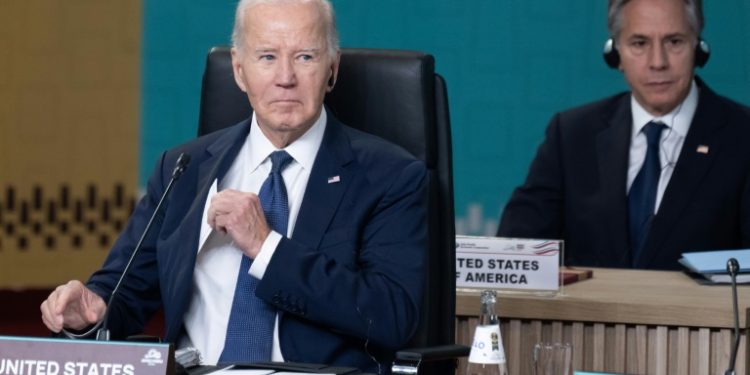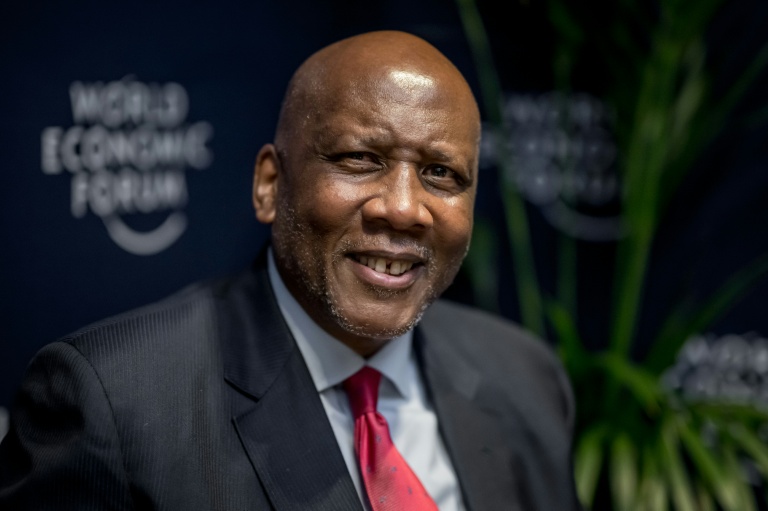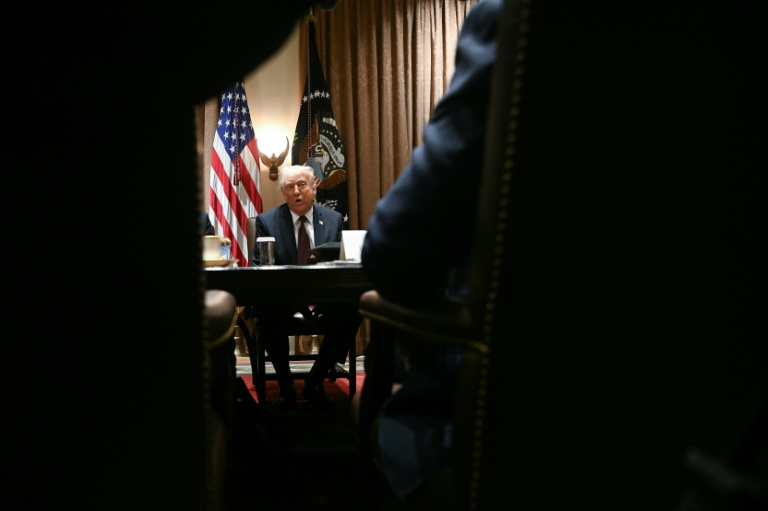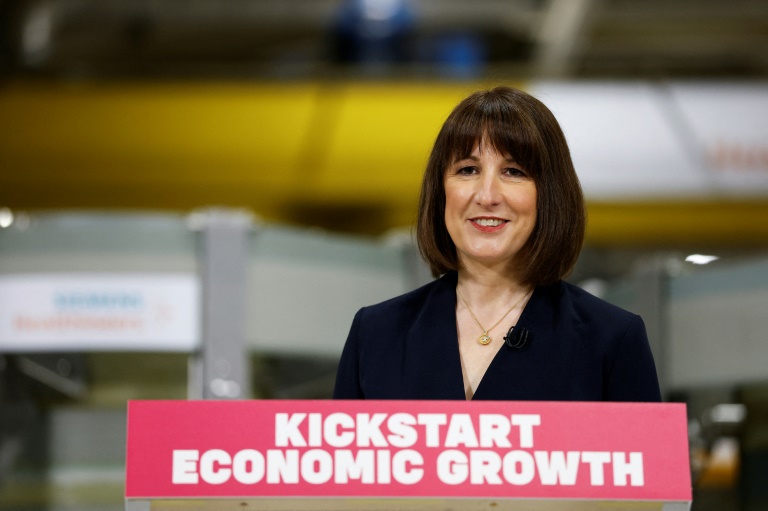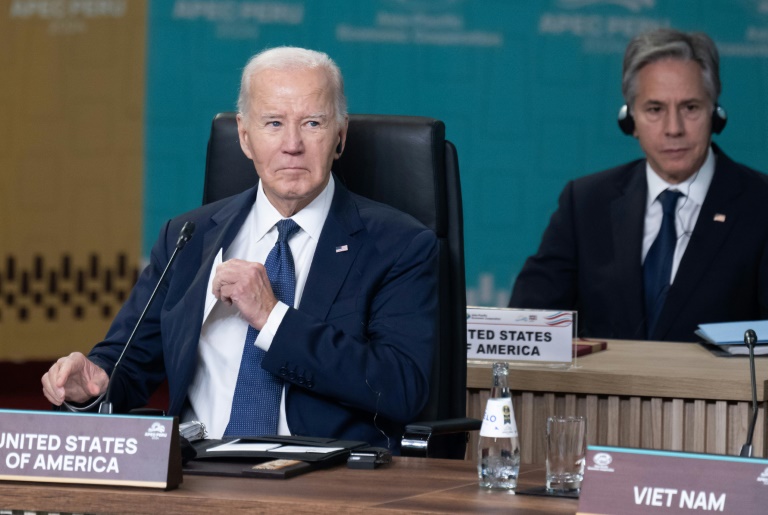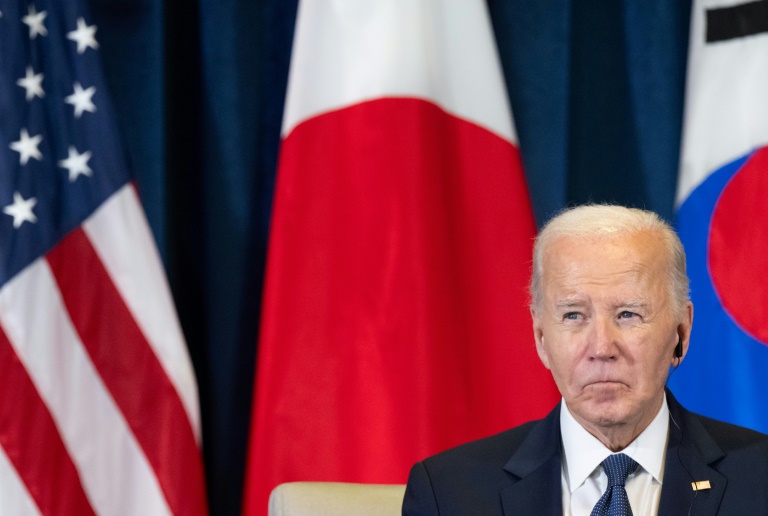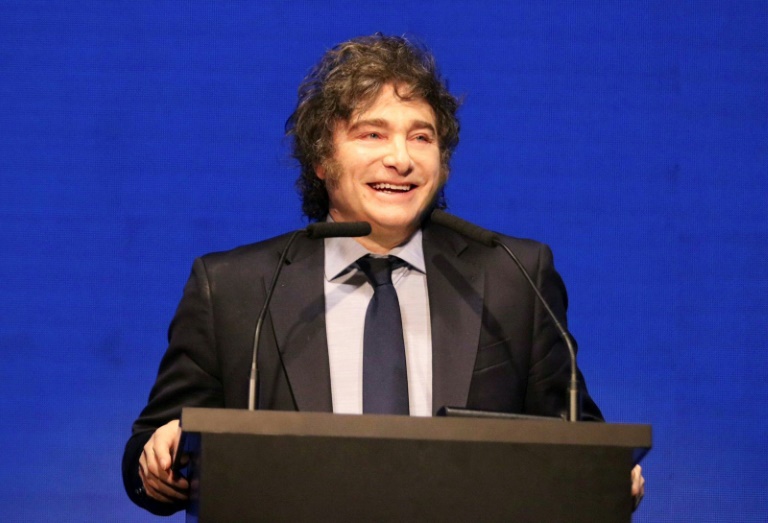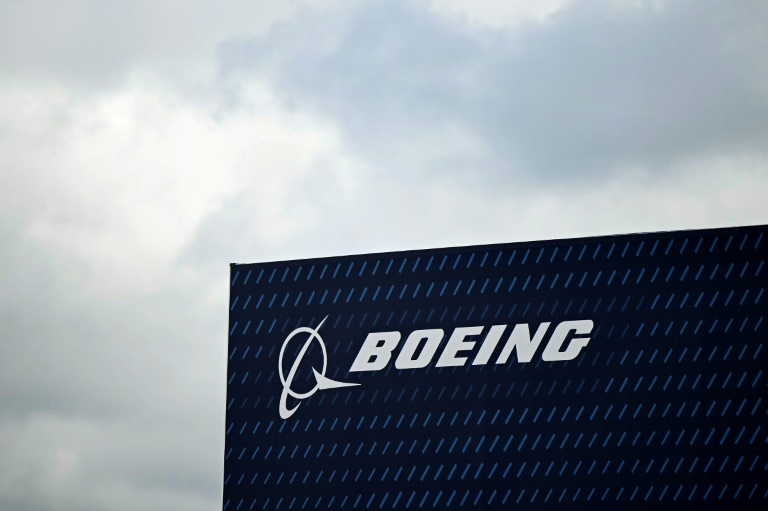Lima (AFP) – US President Joe Biden joined Asia-Pacific leaders for a summit on economic cooperation Friday in Lima, where he is set to meet Chinese counterpart Xi Jinping under a cloud of uncertainty cast by Donald Trump’s election victory. Xi — who was not present for Friday’s opening of the Asia-Pacific Economic Cooperation (APEC) summit — is scheduled to hold talks with Biden on Saturday. A US administration official said their face-to-face will probably be the last meeting between the sitting leaders of the world’s largest economies before Trump takes office in January.
Summit host President Dina Boluarte of Peru told gathered leaders Friday that multilateral economic cooperation must be bolstered “in a context in which the different challenges we are facing increase levels of uncertainty (for) the immediate future.” She added: “We need more contribution, collaboration and understanding, and less fragmentation.” APEC, created in 1989 with the goal of regional trade liberalization, brings together 21 economies that jointly represent about 60 percent of world GDP and more than 40 percent of global commerce. The summit program was to focus on trade and investment for what proponents dubbed inclusive growth.
But uncertainty over Trump’s next moves clouds the agenda — as it does for the COP29 climate talks underway in Azerbaijan, and a G20 summit in Rio de Janeiro next week. The Republican president-elect has signaled a confrontational approach to Beijing for his second term. On Thursday, APEC ministers, including US Secretary of State Antony Blinken, held their own meeting behind closed doors in Lima to set the tone for the summit. Trump announced this week he will seek to replace Blinken with Senator Marco Rubio, a China hawk. Rubio faces Senate confirmation for the post.
The APEC summit is also attended by Japan, South Korea, Chile, Canada, Australia, and Indonesia, among others. Russian President Vladimir Putin was absent. Trump’s “America First” agenda is based on protectionist trade policies, increased domestic fossil fuel extraction, and avoiding foreign conflicts. It threatens alliances Biden has built on issues ranging from the wars in Ukraine and the Middle East to climate change and trade. The Republican president-elect has threatened tariffs of up to 60 percent on imports of Chinese goods to even out what he says is an imbalance in bilateral trade.
Beijing is grappling with a prolonged housing crisis and sluggish consumption that can only be made worse by a new trade war with Washington. But economists say punitive levies would also harm the US economy, and others further afield.
China is an ally of Western pariahs Russia and North Korea and is building up its own military capacity while ramping up pressure on self-governed Taiwan, which it claims as part of its territory. It is also expanding its reach into Latin America through infrastructure and other projects under its Belt and Road Initiative. Xi on Thursday inaugurated South America’s first Chinese-funded port, in Chancay, north of Lima, even as a senior US official warned Latin American countries to be vigilant when it comes to Chinese investment.
The Chinese president is set to meet his Chilean counterpart Gabriel Boric Friday, while Biden will meet Japanese Prime Minister Shigeru Ishiba and South Korean President Yoon Suk Yeol — key US allies in Asia. Blinken is scheduled to address an APEC CEOs meeting being held on the sidelines of the summit. China isn’t the only APEC economy in Trump’s crosshairs. The incoming US leader has threatened tariffs of 25 percent or more on goods coming from Mexico unless it stops an “onslaught of criminals and drugs” crossing the border.
© 2024 AFP

